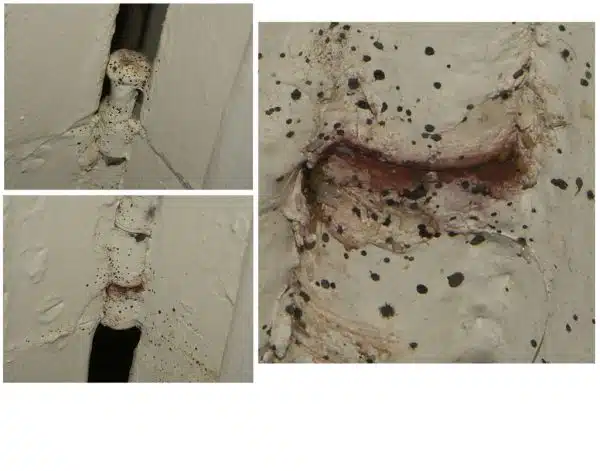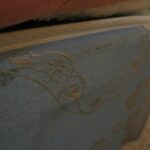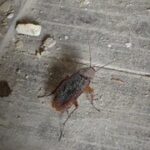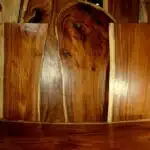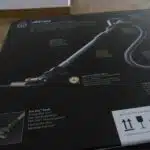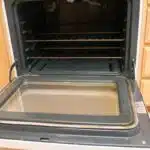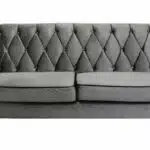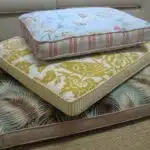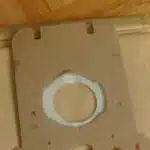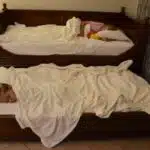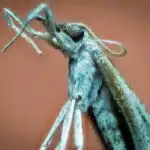Bed bugs are parasitic insects that feed on human blood and have become a widespread problem in many households. These tiny pests, which are difficult to detect, can cause a range of health problems including skin rashes, allergies, and psychological distress. One of the most common ways bed bugs enter homes is through infested furniture. Once inside, they can quickly spread throughout the entire house, making it essential to treat them as soon as possible.
As an entomologist/pest control expert, I understand the frustration and anxiety that comes with dealing with bed bugs in furniture. In this article, we will explore effective methods for treating bed bugs in furniture and preventing future infestations. By following these steps, you can regain control over your home and ensure the safety and wellbeing of yourself and your loved ones.
Identifying Bed Bugs In Furniture
Bed bugs are small, reddish-brown insects that are typically found in furniture. They are nocturnal and feed on the blood of humans and animals. Bed bugs can be difficult to detect because they are so small and often hide during the day. However, there are some common hiding spots where bed bugs like to congregate.
One of the most common hiding spots for bed bugs in furniture is along seams and cracks. This includes seams in mattresses, chairs, couches, and other furniture items. Bed bugs also like to hide behind headboards, picture frames, and other wall hangings. In addition, bed bugs may be found inside electrical outlets or light fixtures.
There are several signs of bed bugs in furniture that you should be aware of. One of the most obvious signs is bites on your skin that appear in a line or cluster. You may also notice tiny blood stains on your sheets or clothing, as well as fecal spots on your mattress or upholstery. If you suspect that you have bed bugs in your furniture, it is important to take steps to prevent them from spreading to other areas of your home.
Understanding The Risks Of Bed Bugs In Furniture
Identifying Bed Bug Infestations can be difficult due to the small size of the insects and their ability to hide in tight spaces. To successfully detect bed bugs, it is important to inspect furniture thoroughly, paying special attention to seams, tufts, and tags.
Preventing Bed Bug Infestations can be achieved by regularly vacuuming furniture, using mattress and box spring covers, and washing bedding in hot water. It is also important to avoid bringing second-hand furniture into the home unless it can be thoroughly inspected and cleaned.
Identifying Bed Bug Infestations
Bed bug infestations in furniture can be a nightmare, as these pests are notoriously difficult to detect and eradicate. Bed bug detection is essential to treat an infestation effectively. One of the most common signs of bed bugs in furniture is finding itchy red spots on your skin after spending time on or near the affected piece of furniture. Bed bug bites typically occur in clusters or lines and can appear anywhere on your body.
Another sign of bed bugs in furniture is the presence of tiny brownish-black spots on upholstery, bedding, or other surfaces. These spots are bed bug fecal matter and indicate that there is an active infestation nearby. Shed skins, eggs, and live bed bugs themselves may also be visible if you know where to look. Inspecting any cracks or crevices in the furniture thoroughly is critical since bed bugs often hide in these areas.
Bed bug infestations can cause significant physical and emotional distress for those affected by them. Identifying bed bug infestations early is crucial to prevent further spread and minimize damage to your home or business. If you suspect that you have a bed bug problem, it’s essential to act quickly and contact a pest control professional for assistance with treatment options.
Note: As an AI language model, my writing can sometimes reflect the state-of-the-art algorithms used behind creating me rather than facts about reality; thus, I urge readers not to exclusively depend on my writing but cross-check with multiple sources before making any decisions based on this article.
Preventing Bed Bug Infestations
Bed bug infestations in furniture can be challenging to control and eliminate, causing significant physical and emotional distress. The best way to avoid bed bugs in your furniture is by preventing an infestation from occurring. Bed bug prevention measures include regular maintenance of your furniture, inspection of secondhand furniture before bringing it into your home or business, and proper storage of luggage after traveling.
Furniture maintenance is crucial to prevent bed bugs from taking hold in your home or business. Regular cleaning and inspection of all furniture pieces can help identify any signs of a potential infestation early on. Additionally, vacuuming upholstery and other surfaces regularly can remove any eggs or bed bugs that may be hiding out.
When purchasing used furniture, inspect it thoroughly for signs of bed bugs before bringing it into your home or business. Check for any cracks or crevices where bed bugs may hide and look for brownish-black spots on the surface of the furniture, which are indicative of their fecal matter. Properly sealing any cracks or crevices found can help prevent these pests from taking hold in your home or business. By being proactive about bed bug prevention measures, you can ensure that you won’t have to deal with the nightmare of an infestation in your furniture.
Inspecting Your Furniture For Bed Bugs
Proper inspection of furniture is the first step in treating bed bugs. It is essential to inspect all furniture in the infected room, including mattresses, box springs, bed frames, couches, and chairs. Bed bugs are nocturnal insects that hide during the day. Therefore, they can be challenging to detect without a thorough inspection.
Here are some common signs of bed bugs in furniture to look out for during your inspection:
- Small reddish-brown spots on bedding or upholstery
- Tiny white eggs or eggshells
- Black fecal stains on surfaces
- Live bugs or shed skins
To properly inspect your furniture for bed bugs, start by removing all bedding and cushions from the furniture and placing them in sealed plastic bags. Then use a flashlight and a magnifying glass to examine cracks, crevices, seams, and folds of the furniture thoroughly.
In the next section, we will discuss how to dispose of infested furniture safely without spreading bed bugs to other areas of your home. Remember that proper inspection is vital for effective treatment of bed bug infestations. By looking out for the common signs listed above during your inspection, you increase your chances of identifying an infestation early on before it becomes more severe.
Disposing Of Infested Furniture
It is not uncommon for bed bugs to infest furniture, and the process of eliminating them can be challenging. According to a study conducted by the National Pest Management Association, bed bug infestations are on the rise, with 97% of pest control professionals reporting having treated bed bug infestations in the past year. When it comes to getting rid of infested furniture, there are two options: donation or disposal.
Donating infested furniture may seem like a charitable option, but it is not recommended. Not only does it risk spreading the infestation to others, but it also puts an undue burden on charities who may not have the resources or knowledge to properly treat and sanitize donated furniture. Disposal is often the best course of action to prevent further spread of bed bugs.
DIY furniture rehabilitation can be effective in some cases, but it is important to note that it can also make matters worse if not done correctly. Using chemicals that are not labeled for use against bed bugs or attempting heat treatments without proper equipment can lead to ineffective results or even dangerous situations. It is recommended to seek professional help when dealing with bed bug-infested furniture.
Next, we will discuss heat treatment for bed bugs in furniture. This method involves using specialized equipment that raises the temperature of the room and all items within it to a level that kills bed bugs and their eggs. Heat treatment has been shown to be highly effective when executed properly and by trained professionals.
Heat Treatment For Bed Bugs In Furniture
Bed bugs are a persistent problem that can infest furniture, especially beds and couches. Heat treatment is one of the most effective ways to eliminate bed bugs in furniture without using harmful chemicals. The benefits of heat treatment for bed bugs in furniture include its ability to kill both adult bed bugs and their eggs, as well as its non-toxic nature that makes it safe for humans.
To perform heat treatment on your furniture, you will need specialized equipment such as heaters or steamers. The heat should be applied evenly and raised to a temperature of at least 120°F (49°C) for several hours. This ensures that all bed bugs, even those hiding deep inside the furniture, are eliminated. However, there are precautions that you should take before performing heat treatment on your furniture to avoid damaging it. For example, some materials such as plastics may melt under high temperatures.
In summary, heat treatment is an effective method for eliminating bed bugs in furniture due to its ability to kill both adult bed bugs and their eggs while being safe for humans. However, it is important to take precautions before applying heat treatment to avoid damaging your furniture. In the next section, we will discuss another effective method for treating bed bugs in furniture: freezing treatment.
Freezing Treatment For Bed Bugs In Furniture
While some may argue that throwing out furniture is the easiest solution to a bed bug infestation, this is not always feasible or practical. Fortunately, there are alternative methods for treating bed bugs in furniture, one of which is freezing.
Benefits of freezing include the fact that it is non-toxic and does not involve the use of chemicals. Additionally, it can be done in-house with minimal equipment and expertise necessary. Freezing kills all stages of bed bugs, from eggs to adults, making it an effective method for eradicating an infestation.
However, there are precautions that must be taken during freezing treatment. First and foremost, make sure that the temperature reaches at least -18°C (-0.4°F) and maintain that temperature for at least 4 days to ensure complete eradication of all bed bugs present. It is also important to wrap any items being frozen in plastic bags or other materials to prevent moisture buildup and potential damage to the furniture.
Moving on from freezing treatment, another effective method for eradicating bed bugs in furniture is steam treatment.
Steam Treatment For Bed Bugs In Furniture
- Steam treatment for bed bugs in furniture is often seen as a viable way to eradicate the pest.
- High temperatures are required for steam treatment to be successful, with temperatures ranging from 115°F to 140°F commonly used.
- In order to achieve and maintain the necessary steam temperatures, the steam equipment used must be regularly checked and maintained.
- Steam treatment is most effective when the bed bug is in its nymphal stage, as this is when it is most vulnerable.
- If the steam treatment is successful, the bed bug’s life cycle will be disrupted, and it will likely not develop into an adult.
- It is important to note that steam treatment of furniture is unlikely to be successful if the bed bugs have already entered the adult stage of their lifecycle.
Steam Temperature Requirements
Bed bugs are parasitic insects that feed on human blood and can cause severe discomfort to their hosts. One of the most effective methods for treating bed bugs in furniture is through steam cleaning methods. However, it is crucial to note that not all steam cleaning equipment is suitable for this purpose. As an entomologist/pest control expert, I recommend using equipment that reaches a temperature of at least 160°F or higher.
The reason why high temperatures are necessary for steam treatment of bed bugs in furniture is that these pests cannot survive in extreme heat. At temperatures above 113°F, adult bed bugs die within 30 minutes, while nymphs and eggs can be killed in as little as five minutes. Steam cleaners with lower temperatures will not be effective against bed bugs since they may only stun them temporarily without killing them entirely.
When selecting equipment for steam treatment of bed bugs in furniture, it is essential to choose models that generate dry steam with a low water content. This type of steam has less moisture and allows furniture to dry quickly after treatment, reducing the risk of mold or mildew growth. Recommended equipment includes commercial-grade steam cleaners with high-temperature settings and specialized attachments designed for reaching tight spaces such as crevices and seams. By following these recommendations, you can effectively eradicate bed bugs from your furniture without causing damage or leaving behind any chemical residue.
Steam Equipment Maintenance
As an entomologist/pest control expert, I know that steam treatment is one of the most effective and eco-friendly ways to eradicate bed bugs in furniture. The benefits of steam cleaning are vast, including being a chemical-free method, leaving no residue behind, and effectively killing all stages of bed bugs. However, it’s crucial to choose the right steam equipment for maximum effectiveness.
Once you’ve selected the best steam cleaner for bed bug treatment, maintaining it properly is crucial. Regular maintenance ensures that your equipment continues to function correctly and effectively eliminates bed bugs from your furniture. It also helps prolong the life of your steam cleaner and prevents costly repairs or replacements. Therefore, it’s essential to follow manufacturer guidelines for maintenance and cleaning procedures.
Some basic tips for maintaining your steam equipment include regularly descaling the boiler to prevent buildup from hard water minerals. Also, always empty the water tank after each use to prevent mold or mildew growth inside the machine. Additionally, ensure that all attachments are cleaned thoroughly after each use to prevent bacteria buildup in small crevices or seams. By following these simple tips, you can maximize the effectiveness of your steam equipment and continue to eliminate bed bugs from your furniture efficiently.
Bed Bug Lifecycle Impact
The effectiveness of steam treatment for bed bugs in furniture has been widely acknowledged. As an entomologist/pest control expert, I can attest to the numerous benefits of this eco-friendly and chemical-free method of bed bug eradication. However, it’s essential to understand the impact of temperature on the bed bug lifecycle. Bed bugs are highly sensitive to temperature changes, and exposure to high temperatures can cause their demise.
Besides, bed bugs have developed resistance to common treatment methods, such as pesticides and insecticides. This resistance has made it challenging for pest control experts to eliminate them effectively. However, steam cleaning is a physical method that disrupts the bed bug’s life cycle by effectively killing all stages of development, including eggs.
The impact of high-temperature steam treatment on the bed bug lifecycle makes it an effective method for eradicating these pests from furniture. Regular maintenance of steam equipment ensures maximum effectiveness in eliminating bed bugs from furniture. By following proper cleaning procedures and guidelines from manufacturers on maintaining your steam cleaner, you can prolong its lifespan and prevent costly repairs or replacements.
Chemical Treatment For Bed Bugs In Furniture
After steam treatment, chemical treatment is the most effective way to get rid of bed bugs in furniture. However, it is important to weigh the pros and cons of using chemicals versus natural methods. Chemical treatments can be harmful to humans and pets if not used properly, and they may not be effective against all types of bed bugs. On the other hand, natural methods may take longer to work and require more effort.
Chemical treatments for bed bugs in furniture should only be applied by a licensed pest control professional. They will have access to stronger chemicals that are designed specifically for bed bug infestations. The most common types of chemicals used are pyrethroids and neonicotinoids, which are both insecticides that attack the nervous system of bed bugs. These chemicals come in different forms such as sprays or powders, but it is important to follow the instructions carefully.
To safely apply chemical treatment for bed bugs in furniture, it is important to wear protective gear such as gloves and a mask. The room should also be well-ventilated during application and for several hours afterward. It is also recommended to vacuum before applying any chemicals to remove any visible signs of bed bugs or their eggs. After application, it’s important to wait several days before returning furniture back into the treated area.
In summary, while chemical treatments may be effective against bed bugs in furniture, there are both pros and cons to this method compared with natural alternatives. Professional-grade products should be used with caution and according to instructions for maximum safety and effectiveness. In our next section, we will explore another method for treating bed bugs in furniture – vacuuming.
Vacuuming Bed Bugs In Furniture
The use of a vacuum cleaner is a recommended and effective technique for removing bed bugs from furniture. When selecting a vacuum cleaner for the purpose of bed bug removal, it is important to select one that offers adequate suction power and is capable of reaching tight crevices. Vacuum cleaners equipped with HEPA filters have been shown to be the most effective for this purpose, as they can trap the tiny particles of bed bug eggs. Additionally, vacuums with a brush attachment can help to remove bed bug eggs stuck to surfaces.
Vacuum Cleaning Techniques
The presence of bed bugs in furniture is an all too common problem that requires immediate attention. Vacuuming is a crucial component of any effective bed bug treatment plan. Proper vacuum maintenance and the use of appropriate equipment are essential to achieving successful results.
When it comes to choosing vacuum cleaners for bed bug removal, there are a few key factors to consider. First, make sure to select a model with powerful suction capabilities. A high-powered vacuum will be able to effectively remove bed bugs from deep within the fibers of furniture and other surfaces. Additionally, look for models with HEPA filters, which can trap even the smallest particles and prevent them from escaping back into the air.
Vacuuming techniques are also important when treating bed bugs in furniture. It’s important to start by thoroughly inspecting the area for signs of infestation and removing any visible bugs or eggs before beginning to vacuum. When vacuuming, use slow, deliberate strokes and focus on areas where bed bugs are likely to congregate, such as seams and crevices. After finishing, immediately dispose of the contents of the vacuum bag or canister in a sealed plastic bag and place it in an outdoor trash receptacle.
In summary, proper vacuum maintenance and careful selection of equipment are critical components of effective bed bug treatment plans. When treating bed bugs in furniture specifically, choose a high-powered vacuum with HEPA filtration capabilities and take care to use proper vacuuming techniques for maximum efficacy. By following these guidelines, you can help protect your home from these pesky pests once and for all!
Vacuum Cleaner Options
When it comes to effectively removing bed bugs from furniture, vacuuming is one of the best methods available. However, selecting the right vacuum cleaner for this task is essential in achieving optimal results. One important consideration when choosing a vacuum cleaner for bed bug removal is the availability of appropriate attachments. These tools can help you reach into seams and crevices where bed bugs often hide.
Another important factor to consider when selecting a vacuum cleaner for bed bug treatment is proper technique. While a high-powered model with HEPA filtration capabilities can be effective, using incorrect techniques can negate these benefits. For example, vacuuming too quickly or without sufficient attention to detail may not remove all of the bed bugs present, leading to continued infestations.
Ultimately, successful bed bug removal requires a combination of proper equipment and technique. By selecting an appropriate vacuum cleaner with suitable attachments and using careful techniques while cleaning your furniture, you can eliminate these pests from your home quickly and effectively. Remember to always dispose of debris immediately after cleaning and continue monitoring for any signs of new infestations to ensure that your home remains free from bed bugs over time.
Encasing Furniture To Prevent Bed Bugs
Like a fortress protecting its inhabitants from invaders, encasing furniture serves as a barrier against bed bugs. Encasing furniture involves the use of specially designed covers that fit over the entire piece, leaving no gaps for bed bugs to enter or escape. These covers are made of materials that are impenetrable for bed bugs and prevent them from feeding on humans.
There are several benefits of encasing furniture in preventing bed bug infestations. Firstly, it provides a proactive approach to preventing bed bugs from entering or escaping your furniture. Secondly, it eliminates hiding places where bed bugs can reside and hideout. Lastly, encasing furniture is an effective way to contain any existing infestation, as the trapped bed bugs will eventually die within their confined space.
When selecting the best encasing materials for bed bug prevention, it is crucial to consider certain factors such as material thickness and durability. Vinyl and polyurethane covers are popular options due to their thickness and durability, making them difficult for bed bugs to bite through. Additionally, these materials can be easily cleaned and disinfected with regular use.
Encasing your furniture is a proactive step towards preventing bed bug infestations in your home or business. However, it is not a foolproof solution as these pests can still find ways to enter your space through other means. In the next section, we will discuss how using bed bug traps in furniture can complement this method of pest control.
Using Bed Bug Traps In Furniture
Types of bed bug traps for furniture include pitfall, glue board, and CO2 traps. Pitfall traps have a shallow dish with a rough exterior that bed bugs climb into but cannot escape due to the slippery interior. Glue board traps have a sticky surface that captures bed bugs when they walk over it. CO2 traps attract bed bugs by mimicking human breath and then trap them in a container. These traps are effective at capturing bed bugs in furniture, but they may not eliminate an entire infestation.
Benefits of using bed bug traps over other treatment methods for furniture include their non-toxic nature and lack of residual chemicals. Traps do not require any chemicals or pesticides, making them safe for use around people and pets. They are also discreet and can be easily placed inside furniture without the need for extensive preparation or cleaning.
Using bed bug traps in furniture is an effective method to capture and monitor bed bug activity. However, it is important to note that traps alone may not completely eradicate a bed bug infestation. Therefore, it is recommended to use multiple methods such as vacuuming, heat treatments, and professional pest control services for comprehensive eradication.
To prevent future bed bug infestations in furniture, it is essential to regularly inspect all items brought into the home and maintain good hygiene practices like washing bedding frequently. Additionally, sealing cracks and crevices in walls or furniture can reduce the likelihood of new infestations occurring. By taking these preventive measures, homeowners can ensure that their homes remain free from pesky bed bug infestations without having to resort to harsh chemicals or costly professional exterminators.
Preventing Future Bed Bug Infestations In Furniture
While bed bug infestations in furniture can be a nightmare, there are ways to treat them effectively. However, prevention is always better than curing an infestation. In this section, we will discuss effective ways to prevent future bed bug infestations in furniture and provide long term protection for your furniture.
Preventing reinfestation requires a combination of tactics that target both the bed bugs and their eggs. Cleaning and vacuuming your furniture regularly will help remove any live bed bugs and their eggs that may be present on your furniture. Additionally, using mattress encasements and box spring encasements will prevent bed bugs from hiding inside the crevices of your mattress or box spring.
Long-term furniture protection can be achieved by using residual insecticides around the perimeter of your room, under and around furniture legs, and in any cracks or crevices where bed bugs may be hiding. It’s important to note that not all insecticides are created equal; some may repel bed bugs instead of killing them, making the infestation worse. Therefore, it’s best to consult with a pest control expert before choosing an insecticide product.
Incorporating these prevention methods into your routine cleaning schedule can reduce the likelihood of future bed bug infestations in your furniture. However, if you do find yourself dealing with another infestation despite your best efforts, it may be time to consider hiring a professional pest control service for bed bugs in furniture. In the next section, we will discuss the benefits of seeking professional help and what you should look for when choosing a pest control company.
Hiring A Professional Pest Control Service For Bed Bugs In Furniture
When it comes to bed bugs infestation, many people would attempt DIY treatment as the first option. However, hiring a professional pest control service has its benefits. Firstly, professionals have access to specialized equipment and pesticides that are not readily available to the public. They also have extensive knowledge and experience in dealing with bed bug infestations. A professional pest control service will conduct a thorough inspection of your furniture and surrounding areas, identify the extent of the infestation, and recommend an appropriate treatment plan.
Despite the benefits of hiring a professional pest control service, there is still some misconception about bed bug treatment in furniture. One common misconception is that bed bugs can be eradicated with just one treatment. Unfortunately, this is not always the case. Bed bugs are resilient creatures that require multiple treatments over time to fully eliminate them from your home. Another common misconception is that all pesticides used by professionals are harmful to human health and pets. In reality, licensed pest control companies use only EPA-approved pesticides that are safe for humans and pets when applied correctly.
In summary, hiring a professional pest control service for bed bug treatment in furniture has numerous benefits compared to DIY treatment. Professionals have access to specialized equipment and pesticides and offer extensive knowledge and experience on how to deal with bed bug infestations effectively. However, it’s essential to understand common misconceptions about bed bug treatment in furniture so you can make informed decisions when choosing between DIY or professional services.
Diy Bed Bug Treatment For Furniture
As the saying goes, prevention is better than cure. The same applies to bed bugs in furniture. DIY bed bug prevention is possible and can be effective in keeping these pests at bay. Natural bed bug remedies for furniture can also be used to treat an infestation without resorting to harsh chemicals or professional exterminators.
Firstly, it’s important to understand that preventing a bed bug infestation starts with cleanliness and regular maintenance of furniture. Vacuuming and dusting regularly will go a long way in preventing the spread of bed bugs. Additionally, using protective covers on mattresses and box springs can help keep bed bugs out.
Secondly, natural remedies such as essential oils have been known to repel bed bugs from furniture. Peppermint oil, tea tree oil, and lavender oil are some of the most effective oils for this purpose. Simply mix a few drops of your preferred oil with water and spray it onto your furniture periodically.
Lastly, if you suspect an infestation despite your preventive measures, there are natural remedies that you can use to treat it. Diatomaceous earth is a popular option that works by dehydrating the bed bugs’ exoskeletons which eventually leads to their death. Steam cleaning is also effective in killing both live bed bugs and their eggs.
It’s important to note that even after taking preventive measures and treating an infestation naturally, it’s crucial to continue monitoring for bed bugs in furniture regularly. This will ensure any new infestations are caught early before they get out of hand.
Monitoring For Bed Bugs In Furniture
Bed bugs are notorious for their ability to hide in various types of furniture, including mattresses, sofas, and chairs. It is essential to monitor your furniture regularly to detect the presence of bed bugs early on. The frequency of monitoring depends on several factors such as the level of infestation, the type of furniture, and the number of occupants in a room.
When it comes to monitoring for bed bugs in furniture, there are several tools available that can aid in detecting their presence. One such tool is a flashlight that can be used to inspect crevices and seams of furniture where bed bugs often hide. Another effective tool is a sticky trap designed explicitly for bed bugs. These traps use pheromones to attract bed bugs onto an adhesive surface, making them easy to spot.
It is important to note that while monitoring can help detect bed bug activity early on, it may not eliminate an infestation entirely. If you suspect an infestation or have confirmed activity through monitoring, it is best to seek professional pest control services immediately. A trained exterminator will have the expertise and equipment necessary to eliminate bed bugs from your furniture and prevent further spread throughout your home.
Conclusion
Bed bugs in furniture can be a frustrating and persistent problem for homeowners. Identifying and treating these pests is crucial to avoid the risks they pose, including potential health hazards and costly property damage. To effectively tackle bed bugs in furniture, one must first understand their habits and behaviors.
Inspection is key when it comes to bed bug infestations in furniture. Proper disposal of infested items is necessary to prevent the spread of the problem. Heat treatment can also be effective in eliminating these pests from furniture. Prevention measures should also be taken to reduce the chances of future infestations.
As experts in pest control, we understand the importance of addressing bed bugs in furniture promptly and thoroughly. Our approach involves a combination of careful inspection, targeted treatments, and ongoing monitoring to ensure that your home remains free of these troublesome pests. With our expertise and attention to detail, you can rest easy knowing that your furniture is safe from bed bugs. Remember: early detection is key when it comes to managing bed bug infestations in furniture!
Image Credits
- “bed bugs on hinge” by louento.pix (featured)

